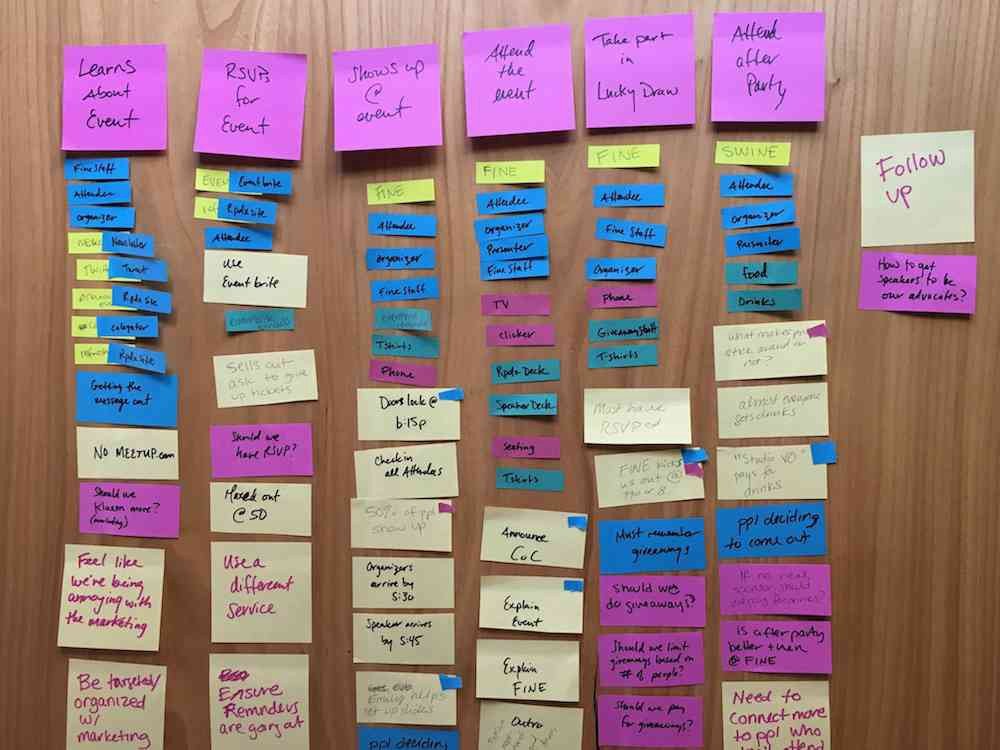Service Design
Studio VO is a Service Design company. Service Design looks at the entire lifecycle of the customer and the business (including the employees of said business) and creates the best products and services it can to make the customer happy and to make the business money.
I was explaining Service Design to a friend recently and he asked, “Isn’t that Customer Experience?” To which I replied, “Uh, sure?” The truth is, Customer Experience (CX) is and isn’t Service Design. The same with User Experience (UX); it is Service Design, and it isn’t.
I’ve been in the profession for almost 20 years and there have always been multiple names for the kinds of activities I’ve done on a project. Service Design, UX, CX, Interaction Design, Information Architecture… To me, because of my background and career, it’s all UX. But what UX means to me isn’t what UX means to most.
Primarily, because most people in UX these days came to it in the last 10 years. The term was around prior to that, but it wasn’t as widely used as it is today, or even 10 years ago. When I started, it was mostly called Usability. I was taught by people who came from the Human Factors world.
As such, it’s entirely fair for my friend to have asked about CX. As it is entirely fair to look at Information Architecture as a project activity rather than a profession. There’s a lot of confusion because we, as a profession, don’t all agree on what to call what we do. But we all do a lot of the same activities, use a lot of the same methods, use a lot of the same tools, and create a lot of the same deliverables.
Why We Chose Service Design
Service Design looks broadly and deeply at the interactions between people on the outside of a business and people on the inside of it; from what motivates people to engage with the business, to how the business should best entice and serve them, to how customers and companies deal with each other once they have an established relationship.
UX is often applied only within the digital solution space. CX tends to look solely at the part of the lifecycle from when a person becomes a customer to when they stop. Information Architecture (IA) is a unique (and needed) specialization within them. They all play a role in the support of customers and the business.
Our past experience is filled with a lot of digital solutions, but not exclusively. We’ve created IA content inventories and sitemaps. We’ve created Customer Service workflows and apps. We also know how important it is to understand the motivations and capabilities of customers and of businesses.
A business may come to us to redesign a form, but we can quickly see the form isn’t the core issue.
Taking a Service Design approach allows us to start those broader conversations earlier. It often better informs the people we work with about what is truly important for them to get right.
Does the form play a role? Absolutely. So does trust, how you speak to people (via copy on your site or directly to customers), and how you solve for their needs beyond the usability of a form.
You have to understand the entire lifecycle, and the roles the customer and the business play, as it is today, how it needs to change to support what you need to do, and how it will change over time because your business may want to do more and your customers will expect you to do more.
We’re all-in on Service Design. It’s somewhat new as a concept in the US, but as a practice and profession it’s been around for a while in other countries and the benefits of taking a holistic approach to design are well understood. Certainly the bulk of the activities are well-established in other areas like, UX and CX.
Many of the projects we’ve taken on over the years have been Service Design due to their scope and what work was required to make them successful. They’ve also been the projects that have had the most impact on our careers and for the people we’ve worked with (and their customers).
It may be that you are reaching out to us with help on your app, or getting your project team focused on the right work, or you need help with a form that isn’t performing well. Let’s take the opportunity to look as broadly and deeply as possible together in order to create meaningful impact for projects large and small.

